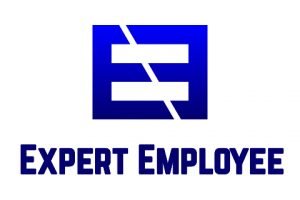This post contains affiliate links.
The typical workplace will experience 20% turnover among new hires in the first 90 days (source) and employees that have not proven themselves during that period are unlikely to succeed long term. Despite the high cost of hiring new employees, once they start work many find that their new company has inadequate, or even non-existent, training programs for their new job responsibilities.
As employers embrace the concepts of agile organizations they are spending less on training (source). The average new hire is receiving fewer training hours with a greater emphasis toward on-the-job learning (source).

On-the-job learning is an active self-led process, you need to engage with your coworkers and stakeholders to understand the critical aspects of your new responsibilities. Leverage subject matter experts and maximize your learning by asking the right questions: how do you make use of this system/process, how does it interface with other key systems/processes, and what are the critical items to monitor to prevent mistakes?
There are companies with good onboarding and training programs, unfortunately they are the exception rather than the norm. Even if you can locate training documents they are always outdated.
In the current circumstances with COVID-19 many businesses are in survival mode and training departments are first to get cut. Learning on the job is always a helpful skill, but it is becoming essential in the modern workplace.
Use these techniques to learn new responsibilities quickly even without training, or use them in parallel with existing training to maximize your effectiveness.
Learn a New Job Quickly with the Pareto Principle
The Pareto Principle, or 80/20 rule, states that 80% of the effects come from 20% of the causes. In other words, 80% of your job performance is from 20% of your responsibilities.
We intrinsically understand that not everything at our job is equally significant, but it is easy to get caught up in checking email and handling items that seem urgent but may not be important. The key is to identify the most important items (the 20%) that matter to your boss and putting your effort there, especially in the beginning.
In most cases, the important performance items are clearly defined and obvious. A production supervisor is responsible for the output of their shift and on-time delivery, a salesperson is responsible for their sales revenue and growth rate, a call center employee is responsible for their calls handled and satisfaction score, etc…
Beyond these primary metrics will be another level of performance monitoring, usually for secondary or constraint metrics. For example the production workers also deal with quality metrics like non-conforming product, sales teams will have a customer acquisition cost, and call centers have a ticket reopen rate.
Within all of the different key performance indicators (KPI), identify the three most important metrics. Every job will have more than 3 KPI, the whole purpose is to identify the most important metrics to focus your time and energy.
Learn Process Flow Concepts Separate From Procedures
Learning a new job is not as simple as learning a new skill. Skills can be practiced and honed in a safe practice environment before they are rolled out in a real situation.
Your coworkers are always evaluating you and forming their perceptions based on your actions, even during exercises or dry run events. But don’t be intimidated or terrified to make mistakes – jump right in the deep end and get started.

The best way to handle your learning is to think of the concepts and process flow separately from the detailed how-to steps.
For example, say you are an hourly employee. Every hourly employee needs to manage their timecard punches, know their work schedule, and request time off. These concepts are universal to every hourly employee at every company. Even though the details of how to execute them can be very different and frequently change, the main concepts do not change.
In some workplaces all three are managed within the same software package, in other companies each function is completely separate. Once you understand the general lay of the land you can ask intelligent questions that are easy to answer: how do I cancel my request for time-off, how do I correct a miss-punch, etc…
This time management example is a very case for illustration, but the concept is important – understand the purpose of each system/process first. The purpose doesn’t change frequently and will give you an anchor point as you dive deeper.
Use Experienced Coworkers as Training Resources

If there is no training offered you are going to need to rely on coworkers for help, but going about it the wrong way can quickly backfire. Here is a recommended plan of attack:
- Read the reference materials so you are familiar with the basics and can ask good questions.
- Schedule time with a subject matter expert in your department, simply ask if you can have 30-60 minutes of their time to pick their brain on [insert topic].
- Use the time to clarify your understanding of the system/process overall and these 4 questions:
- How do you, subject matter expert, use this system/process?
- How does this system/process interface with other key system/processes?
- What are the key things I need to watch so I don’t make a big mistake when working in this system/process?
- Do you know of any helpful references I should use?
- Before the end, lay the foundation for a personal connection with your coworker:
- How does my job interface with your job, and how can I help make your job easier?
- What did you learn the hard way here that I can avoid?
Learn the Basics Before Asking for Help
Think of it this way, if someone asks you for help and then takes a break while you do all the heavy lifting you probably won’t be very happy and certainly will be less willing to ‘help’ them in the future. You are the one who needs help so you should be doing a lot of the heavy lifting.
The same pattern happens at work – when new employees don’t come prepared they quickly burn through any goodwill they may have with their coworkers. But when you have put in some effort and still have questions, you coworker is more likely to help you because you can have intelligent conversation about the topic and not spend all your time going over simple content.
Read the reference materials so you are familiar with the basics and can ask good questions. So prepare yourself before wasting your coworker’s time. Learn the basics for the subject – this could be as simple as knowing the overview and learning the proper vocabulary terms. Even if you are not 100% certain or accurate, it shows respect for their time since they are not your assigned trainer. Your coworker is taking time away from their responsibilities to help you out so be the second friend with your coworkers.
Schedule Time With Your Coworker to Learn a Specific Topic
To survive without training you are going to depend on your coworkers for information and you will need their help, so it is important to foster a good working relationship. Ask around to find who other staff go to for help and then make an introduction for yourself. You want to approach the interaction with the attitude of ‘I’m going to learn this topic well so that I can be an asset and help this person in the future’.
Schedule time with a subject matter expert in your department, simply ask if you can have 30-60 minutes of their time to pick their brain on [insert topic]. Feel free to be complimentary ‘Hey Amy, I heard you are the resident guru for [subject matter], do you have time to meet with me Tuesday afternoon? I’ve already been self-studying the following materials, are there other resources I should be using?’
You want to make a good first impression – i.e. that you value their knowledge and want to learn from the subject matter expert, and you are proactive and will come prepared. Scope your session appropriately and then keep to the time scheduled – you want to show that you respect their time so they are willing to help you again in the future. If you already have some key points that need clarification, include them so your coworker can prepare.
Ask These Four Key Questions When Learning a Topic

When you meet with the subject matter expert there are four key questions to answer during the discussion. The last two are self explanatory and you can simply ask directly, but the first two are more nuanced. If you simply ask your coworker ‘How do you use this system/process’ it gives the opposite impression from what you want – you look unprepared and lazy. Instead let the underlying question guide your interaction. A good approach is ‘Here is my understanding of this topic, please point out any corrections or missing items.
Similarly, the second question can be tricky because oftentimes the interactions are second nature to experienced employees and they don’t consciously think about them. You can draw out the information by identifying critical facts and asking questions ‘Where does the scheduler get this forecast information?’ or ‘How is this number calculated?’.
- How do you, subject matter expert, use this system/process?
- How does this system/process interface with other key system/processes?
- What are the key things I need to watch so I don’t make a big mistake when working in this system/process?
- Do you know of any helpful references I should use?
The third question is important because it starts to demonstrate your value. Usually the subject matter experts are also the owners, so when something goes wrong it lands on their lap to fix it. Simply asking about the big and common mistakes shows a level of responsibility above the average employee.
Finally, the fourth question is there because all too often the subject matter expert has created their own helpful reference material, even if it hasn’t made its way into any official training. If you don’t ask you may never learn about the cheat sheet they created the last time they went on vacation so that their coverage person could do the job.
Form a Personal Connection with your Coworker

Training is draining – both for the trainer and the organization. The trainer is presumably a highly skilled staff member that would be otherwise contributing on higher level tasks and typically still has to complete their normal responsibilities. Even when the training is done by ‘shadowing’ or other on-the-job methods, the work is done slower than normal to allow for questions and coaching. But training is a necessary investment with the promise of payoff in the future.
How does my job interface with your job, and how can I help make your job easier? Usually the trainer themselves gets only minimal benefit, sure there is another capable member on the team to divide the work but not much more than that. Instead, you offer them value as a future connection. Every job has annoying aspects so your commitment to make their job easier is a mutually beneficial quid pro quo. Growing your professional network is always a good thing and this is a perfect opportunity.
What did you learn the hard way here that I can avoid? Don’t leave the meeting without taking the opportunity to learn from their experience. The question is worded intentionally vague – they will naturally ask if you mean related to your discussion topic or in general at the company – you can naturally segue into a wider discussion.
Be sure to thank them for their time before leaving and comment that you will continue working with the information provided but reach out if you have additional questions.
My Boss Refuses to Train Me

Some organizations view their lack of training as a badge of honor, and the attitude is more prevalent in companies that are only a few years old. In the startup environment people wear multiple hats and must respond quickly to changing conditions. The sunk cost of creating training and documentation doesn’t make sense because it becomes outdated so quickly.
If you are in the situation where your boss did assign someone to show you the ropes don’t expect much more than them to run your through to topic once. When even that gets skipped you need to be more direct – the first step is to ask your trainer directly and face to face to complete your boss’s request.
A frequent excuse it that there hasn’t been time for training due to urgent work. There is a good chance your boss doesn’t know that all learning is being delayed, so bring them some data. Also, it is not a decision between doing the urgent work and training, the urgent work needs to get done. But after the urgent work, what occupies your time? Look for opportunities to reduce low-value work or carve time out for training from other low-priority work.
If there is zero investment in improvement then your team will forever be on the hamster wheel, running hard but getting nowhere. Look for low-hanging fruit where you can confidently say ‘if we spend a few hours doing these things now then we recover that cost quickly’ with tangible benefits.
How to Approach Sink or Swim Training
The problem arises when the company grows and wants to have more stable, predictable operations but doesn’t have the infrastructure to support themselves. Or even worse, the sink or swim period is viewed as a sort of proving ground to weed out new staff that can’t adjust. This frequently stems from an attitude of ‘I didn’t have any training when I started so you need to figure this out on your own’. Intended to identify the super starts, the problem with sink or swim environments is that frequently the narcissistic members emerge – the ones that have no problem pulling others down to push themselves up a little.
- The first step is to manage your expectations. You will not receive step-by-step tutorial level instructions and if you do come across a reference expect that it will be outdated.
- The next level is to understand how the different system/processes interact with each other by learning the workflow. At each step in the process, where does the work (or information) come from and where is it going to?
- Finally, you need to know the deliverables and the common errors so you can watch for and prevent them. In some workflows, being on-time is the most important factor, but in others it is far more important to be error-free.
How Long Should It Take to Learn a New Job

It is normal to struggle in a new job and many new graduates to struggle significantly with their first job, and this is one reason why an internship or co-op semester is such a good experience. At school you have a built-in support system and your work is assigned to you. Outside of research activities, you operate with the confidence that a ‘correct answer’ exists.
Business operates differently and you need to adjust, this step trips up a lot of very capable new grads. It is normal for companies to operate with vague business objectives, undefined parameters, and no training. A new project gets assigned and you have to figure it out. Even if there is an off-the-shelf solution available it still has to be implemented.
Have a 30 Day – 60 Day – 90 Day Plan
The specifics will be different for each job, but a good general outline is as follows:
- In the first 30 days you should learn how your job functions interact with key stakeholders and be competent at your core job functions
- In the first 60 days you should be contributing for all of your job responsibilities and meeting targets and objectives
- In the first 90 days you should be demonstrating your capability and showing leadership/initiative by exceeding targets
Conveniently, many companies run probation periods with 30-60-90 day duration, and even if its not an official program you can bet that your new boss is looking at similar performance milestones. Map out the details for your new job and bring your plans to your tag-up discussions with your boss, every leader appreciates staff that are proactive with their own development and take ownership. Using a methodical approach you can reduce your stress and struggle less.
